While most of the attention in clothing trends from the 1920s always revert back to its classic gatsby fashion and flapper dresses, I want to dig deeper into how and why they presented themselves this way. Often, the 1920s fashion is associated with a fashion that is timeless even throughout generations. However, the early years of the 1920s are not often brought to light. The early years in the 1920s presented clothing trends that complemented various body shapes and sizes across the ends of the spectrum. This is quite a new achievement, especially in the early 20s. Early 1920s fashion was more flattering on all body types whereas the later 20s presented choices of clothing that were more fitting on certain body types more than others.
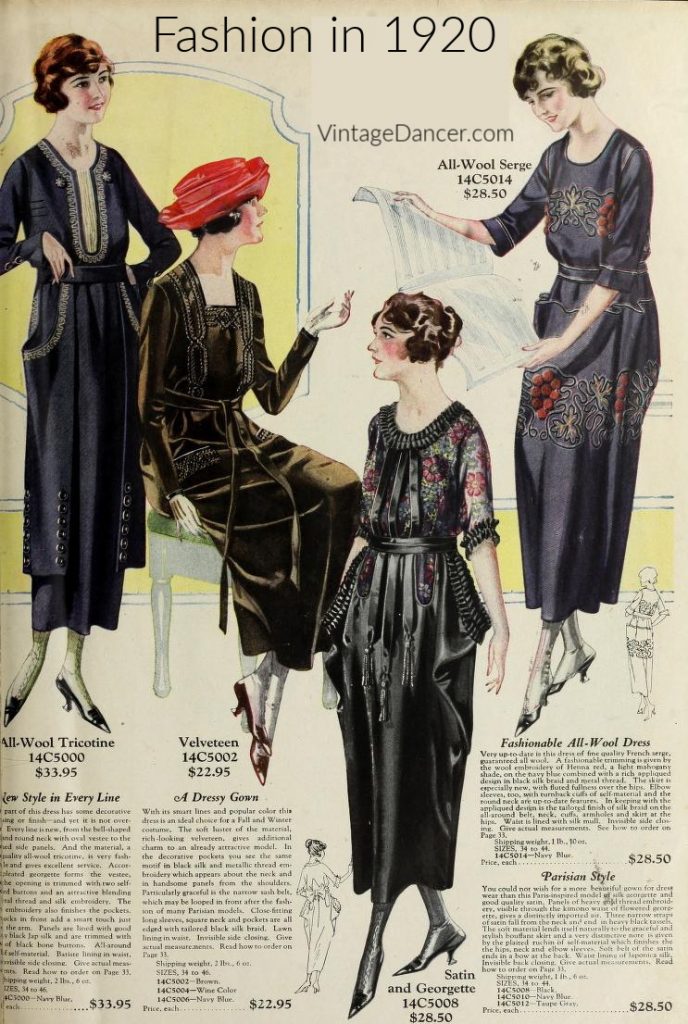
1920s Fashion for women: Dresses and Suits
Cotton house dresses were typically worn by women working from home. Cotton house dresses were usually made out of soft cotton material to ensure durability. Since most women conventionally worked at home, the more functional dresses were the most popular choice. They were typically worn throughout the day – hence, comfort was at its prime focus. Dresses were so easy to make, women often had time to sew their own dresses. In 1920s fashion, many women made their dresses using different materials from day-to-day materials.
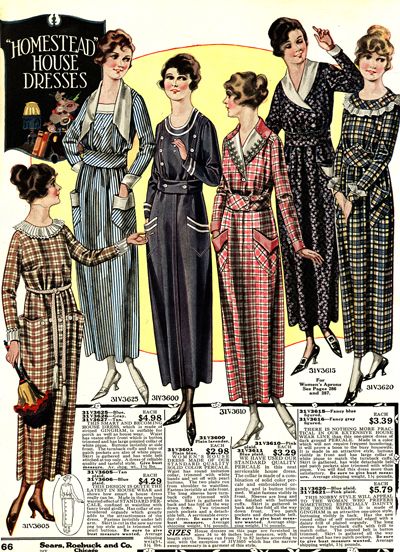
Suits were also commonly worn in the 1920s for day-to-day activities. Women in the 20s were commonly associated with running errands, work, and leisure. The women who worked outside had unique and comfortable uniforms for work. However, women’s suits of the 20s were nothing like contemporary suits today. Jackets were usually elongated down to the knees with a matching belt in the waist area.
Here is a photo:
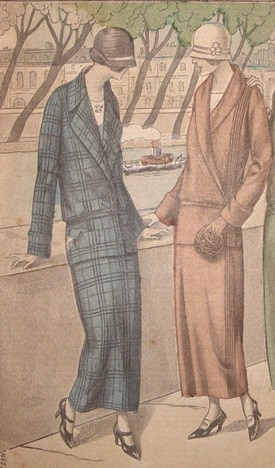
Skirts
Skirts during the twenties went from the vogue thing to out of fashion by the mid-decade. Women wore skirts and blouses in everyday activities. In most cases, skirts were not of formal fashion, hence, they were usually only worn at home or in casual circumstances. Most of the skirts in the roaring twenties complemented the ‘sporty’ look aesthetic. Skirts played a big role in common sports today like tennis to bowling.
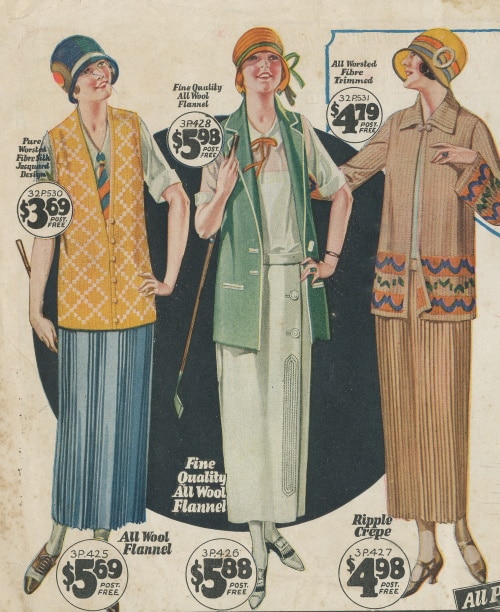
In the late 20s however, skirts came down to the knees and had a slightly flared shape towards the bottom. Skirts were often in solid colors, lacking patterns or decorative embellishments. However, during summer, skirts were seen as an asset in the wardrobe of women due to their versatile and light-weight nature! It is often dressed in casual occasions – complementing the energy during summer. Also very common during the 20s were knit two-pieces dress. It was first designed for sportswear but was hardly ever played with. Instead, they became fits for ‘sportswear’ aesthetics.
These were worn all year round while the knitted yarn was usually more fitting for winter due to its material. Women often paired knitted tops to their bottoms and went out for casual tea with the girls! Similarly, the knee skirts were usually straight and knee-length. However, there were some exceptions that had box pleats on the lower area on the skirt.
1920s Fashion for men : Suits
The men of 1920 commonly followed the great gatsby fashion for occasions or other formal purposes. But if you want to know more about 1920s fashion for men, one item of clothing to look into suits.
The rich had closets full of suits – one for each occasion, perhaps! They had an extensive collection of suits ranging from many different colors and patterns. Every style – they had it. While the working poor had one suit to wear to the Church on Sundays. The clear disparity within social classes was evident during the 1920s.
The man of conservative style
All men’s fashion from the twenties came from Britain. Even different parts of Europe turned to Britain for fashion inspiration. Classy, refined, and good-looking were the three main checklists that they had to ensure. The British look is also known as the classic suit in contemporary today. The traditional British look had wide, naturally shaped shoulders, fitting loose jacket, two large pockets, and 1 to 4 buttons closed at all times.
Interestingly, while women had loosely-placed clothings, men had breasted jackets that accentuated their hips – giving them shape and fitting looks. This was very interesting as women’s clothings were loosely-placed together while men had more fitting style that accentuated the shape of their bodies.
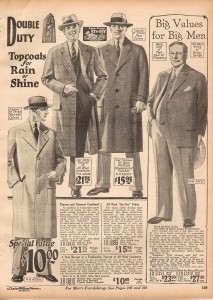
Suit pants favored the natural leg as well. Suit colors were masculine: dark, navy-blue, medium-grey, and soft brown. They were solid colors and were void of patterns or mixes of colors. A comparison of the suits in the roaring twenties as opposed to the lighter colors today is distinct. Interestingly enough, the material of the suits was often thicker than the suits in the markets today.
It is no wonder that today, suits are a lot lighter and breathable. Men have been kept up in heavy suits for over a century!
1920s Men’s Coats
Even though World War 1 (WW1) ended, men’s and women’s 1920s overcoat and jackets continued to be incorporated into everyday fashion.
Long knee wool coats were often worn. Although the coats were usually elongated, it is fitting and accentuated the thin and muscular physique of men in the era. Men’s coats hung down below the knees. They came in mostly masculine colors: navy-blue, soft-brown, black – Peaky Blinders men.
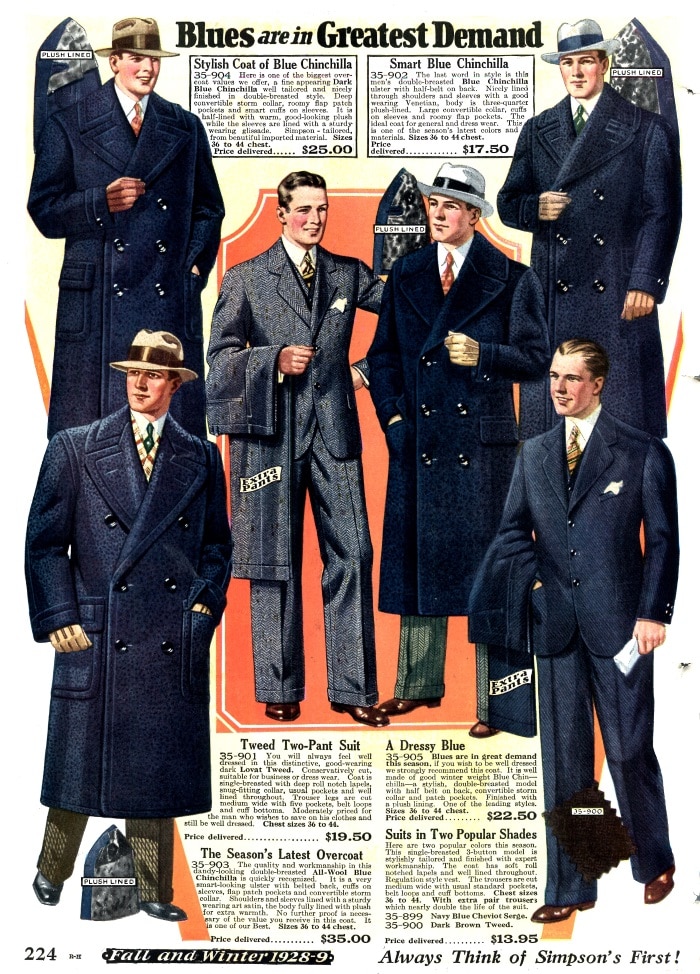
Another interesting variation of the coat, subverting from the classic is the Ulster coat. It is usually worn throughout winter. As it is double-breasted and longer in style, coats can be buttoned up all the way – perfect for winter. And, they never forgot to complete their outfit with a perfect pair of shoes!
True Ulster coats have wide cuffs at the wrist – hailing from country gentleman’s wear in the province of Ulster in Ireland. Many of these ulster coats resembled a lighter version of trench coats. You could not have distinguished between the two at times. They went on to become a common every day men’s coat in the 1930s.
Conclusion
Women and men were often seen to be dressed in versatile clothing. One of the prime focuses on women during this era was comfort. They were dressed in comfortable clothing but still accentuated the fashionable nature.
While men often dressed in suits that associated with styles from Britain and bringing light to more traditional suits during contemporary today. Most of these outfits still remain timeless throughout the years.

